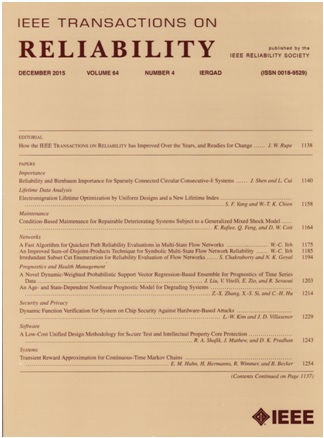面向非功能需求分类的堆叠集成深度学习
IF 5.7
2区 计算机科学
Q1 COMPUTER SCIENCE, HARDWARE & ARCHITECTURE
引用次数: 0
摘要
需求工程是软件质量的基础。在软件开发生命周期的初始阶段定义正确的软件需求可以使项目成本和工作最小化。虽然功能需求(FRs)定义了软件特性,但非功能需求(nfs),如可用性、性能、安全性和可靠性,对于软件的接受和部署是必不可少的。理解来自不同涉众的软件需求是一项乏味的任务。对涉众需求的手工调查可能会跳过重要的nfr。因此,出现了对自动需求分类技术的需求,以消除对涉众需求的误解,并加快开发过程。几种机器学习方法针对nfr的分类。我们探索了递归神经网络、长短期记忆和门控递归单元深度学习(DL)方法。我们将随机搜索技术应用于超参数优化。此外,我们使用堆叠集成学习,通过结合基础模型的优势,使用支持向量机作为元学习器来增强分类。我们使用网格搜索来优化元学习器的超参数。此外,我们比较了堆叠集成方法和BERT语言模型。该方法在来自两个数据集的914个nfr上进行了评估。我们的集成模型的加权平均精度、召回率和F1-Score分别为0.91、0.90和0.90。本文章由计算机程序翻译,如有差异,请以英文原文为准。
Stacked Ensemble Deep Learning for the Classification of Nonfunctional Requirements
Requirements engineering is the foundation for software quality. Defining the correct software requirements in the initial phases of the software development life cycle minimizes project costs and efforts. While functional requirements (FRs) define the software features, nonfunctional requirements (NFRs), such as availability, performance, security, and reliability are essential for the acceptance and deployment of the software. Understanding software requirements from different stakeholders is a tedious task. Manual investigation of the stakeholder needs may skip important NFRs. Thus, the need for automatic requirements classification techniques arose to eliminate the misinterpretation of stakeholder needs and to speed up the development process. Several machine learning approaches targeted the classification of NFRs. We explore the recurrent neural network, long short-term memory, and gated recurrent unit deep learning (DL) methods. We apply the random search technique for hyperparameter optimization. Further, we use stacked ensemble learning to enhance the classification by combining the strengths of the base models using support vector machine as a meta-learner. We use grid search to optimize the hyperparameters of the meta-learner. Further, we compare the stacked ensemble approach with the BERT language model. The proposed approach is evaluated on 914 NFRs gathered from two datasets. Our ensemble model achieved a weighted average precision, recall, and F1-Score of 0.91, 0.90, 0.90, respectively.
求助全文
通过发布文献求助,成功后即可免费获取论文全文。
去求助
来源期刊

IEEE Transactions on Reliability
工程技术-工程:电子与电气
CiteScore
12.20
自引率
8.50%
发文量
153
审稿时长
7.5 months
期刊介绍:
IEEE Transactions on Reliability is a refereed journal for the reliability and allied disciplines including, but not limited to, maintainability, physics of failure, life testing, prognostics, design and manufacture for reliability, reliability for systems of systems, network availability, mission success, warranty, safety, and various measures of effectiveness. Topics eligible for publication range from hardware to software, from materials to systems, from consumer and industrial devices to manufacturing plants, from individual items to networks, from techniques for making things better to ways of predicting and measuring behavior in the field. As an engineering subject that supports new and existing technologies, we constantly expand into new areas of the assurance sciences.
 求助内容:
求助内容: 应助结果提醒方式:
应助结果提醒方式:


